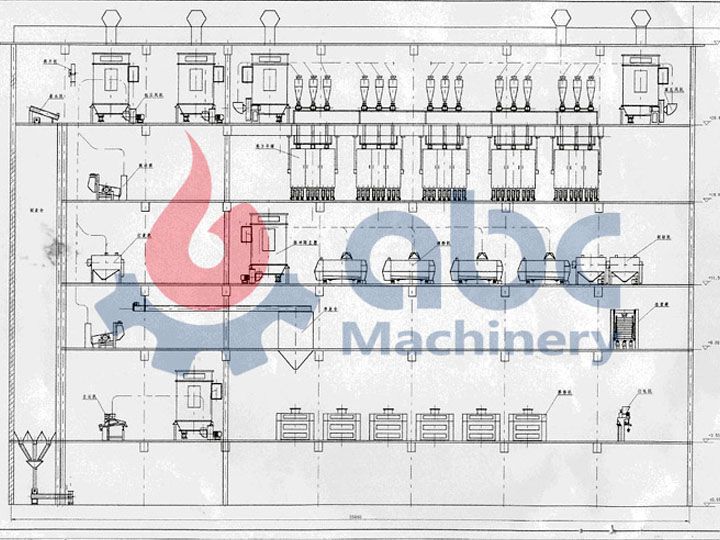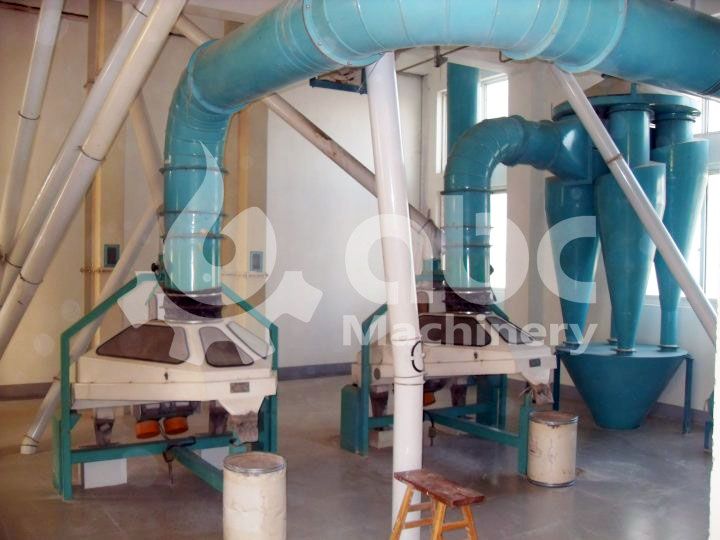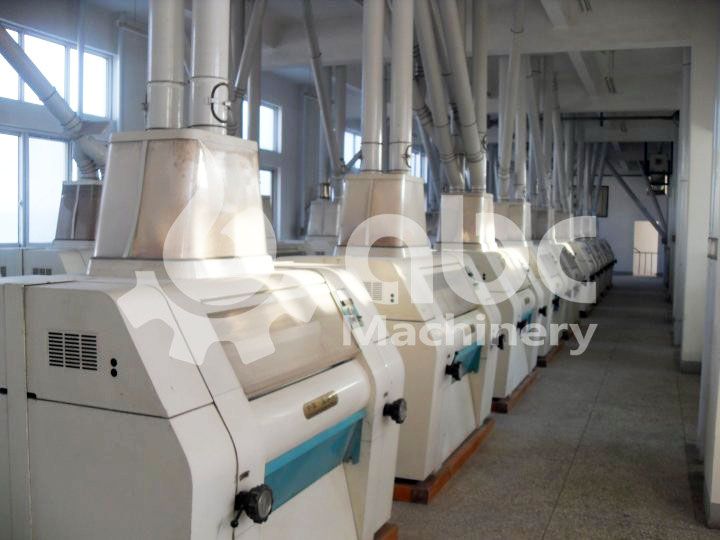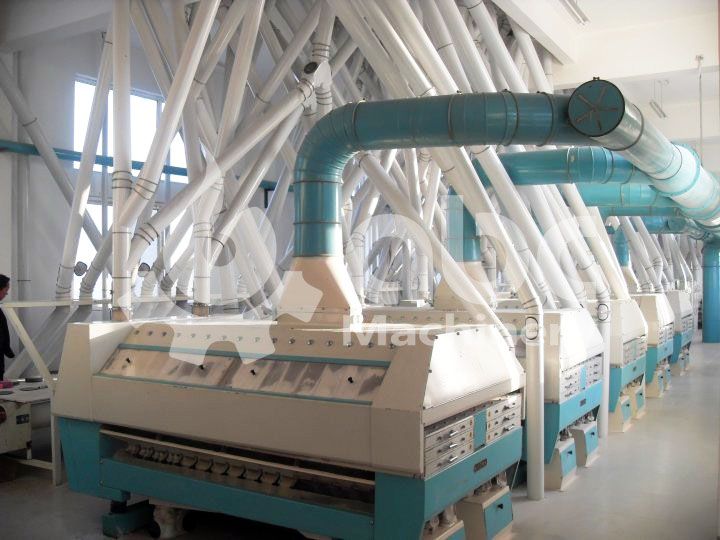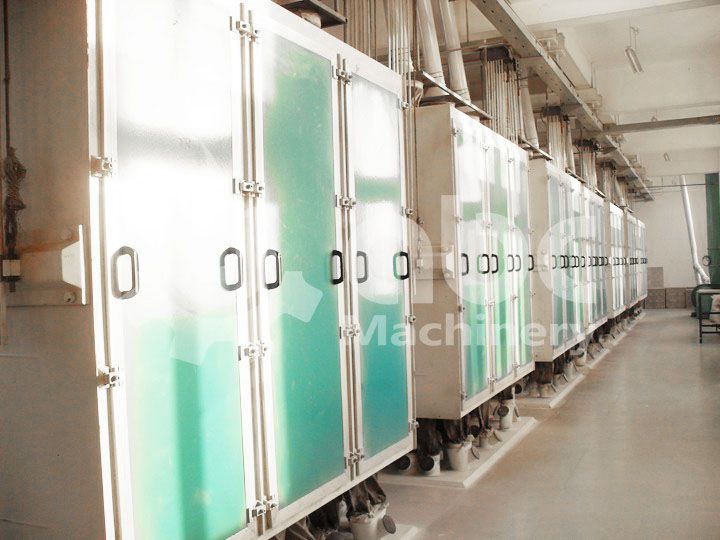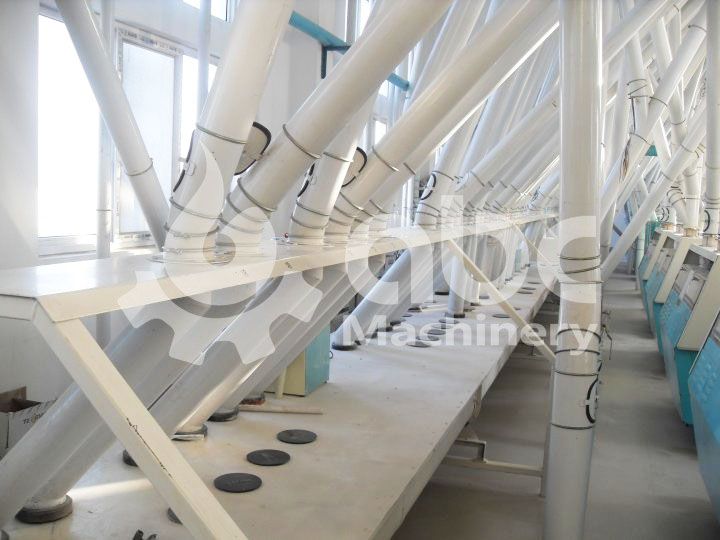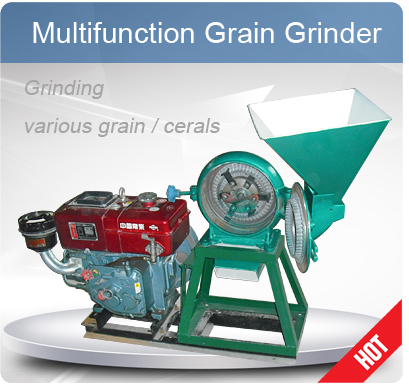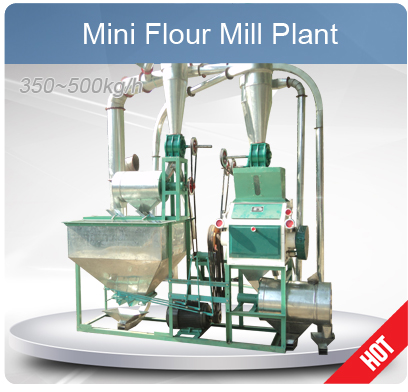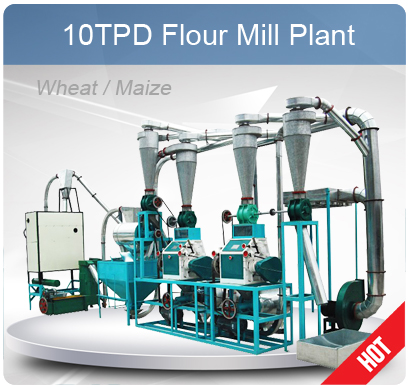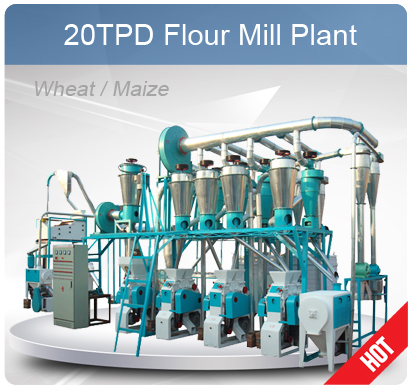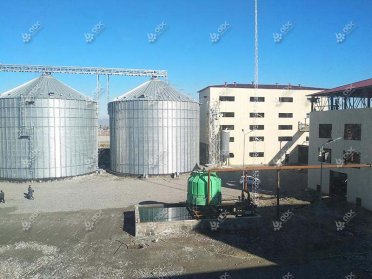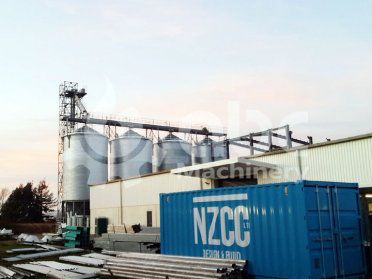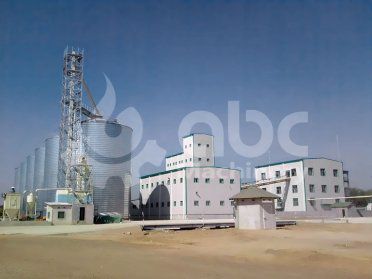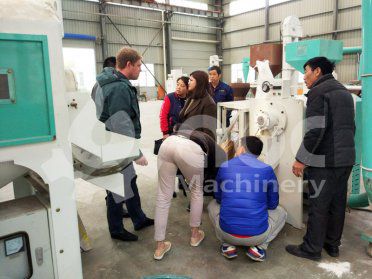Project Name: 300-500TPD Automatic Flour Mill Plant
Client: Ideals flour mill company
Workshop Size: 60m*8.5m*27.5m (6 storey)
Year of Construction: 2012
Grain: Hard wheat
Capacity: Process 300T wheat per day.
Final flour: For local food such as Asid
Power: 1080kw power consumption per ton wheat: 70KW.H, the voltage: 380V,50HZ
The number of the workers: It needs 3 shifts per day; every shift needs 10-12 workers.
Flour extraction rate: 70-75%
Adopts 16 sets of FMFQ1000/250 Pneumatic roller mill
Flour Mill Plant cost for machine only: Around 800,000 USD
This is an automatic wheat flour production line built for refined wheat flour milling. This client order the plant from us after a factory visit and communicating with our engineer group. This whole automatic flour mill plant is customized based on his estimate plan.
Once the flour mill machines are manufactured, they are shipped to the customer place, and after four months of installation, this automatic wheat flour mill started to produce flour and sold to the market directly. The flour is not only popular in local city, but also sold to the other place of the country such as Oran, Blida, Alger, Setif.
How Flour is Made In Automatic Wheat Flour Mill
Different portions of the wheat grain are used to make various types of flour in the milling or grinding process. The wheat grain includes the endosperm, the bran layer and the wheat germ. The wholemeal flour is made with all the including all the various parts of the grain. White flour on the other hand is only made from endosperm. Brown flour has almost 85% of the original wheat grain, some parts of germ and bran are removed. (Related projects: 160TPD wheat flour plant set up in New Zealand)
- Cleaning and Conditioning
Cleaning is the first step in the wheat milling process. Once wheat is taken from the silos, it undergoes through cleaning to unsure removal of any foreign particles. Automatic machines are used which remove barley and small seeds. This machine separates by shape to ensure differentiation. Powerful magnets help to extract any ferrous metal objects. Gravity separation enabled the removal of stones and air blowers lift off the chaff and dust.After the cleaning process, the wheat is conditioned by tempering it with water. It is left in conditioning bins for 24 hours. This ensures suitable moisture content. Conditioning increases the release of the white endosperm during the process of milling. (Related equipment: Grain Cleaning & Hulling Machinery)
- Blending
The wheat, which has been cleaned and conditioned, is blended through process known as gristing. Gristing combines various types of wheat to produce a mix capable of making the required quality of flour.
- Separating
- Streaming
Separating gives us white flour. In the steaming process, bran and wheatgerm is added into this white flour obtained in the process of separating, to make brown or wholemeal flour. A raising agent such as baking powder would be added to manufacture self-raising flour at this stage. Certain nutrients such as iron, calcium and B vitamins are legally required to be added in white and brown flours (Wholemeal is only found to be low in calcium). These nutrients are also added in the streaming stage. Whitest flours are produced from early reduction rolls. As we continue to increase the proportion of bran particles in later rolls the flour gets less white. in order to get wholemeal flour, the various streams such as the bran layer and the wheat germ have to be blended together in their initial roportions. A typical mill can have up to 12 reductions rolls and 4 break rolls, which leads to 16 flour streams. (Related equipment: pneumatic flour mill for sale)
- Sifting
After being streamed, flour is sifted and thenpacked into bags automatically. These bags are then delivered to shops or supermarkets. The leftover wheat feed is sometimes used to make animal feed and breakfast cereals.
- Storage of Wheat
Every load of wheat passes through an initial cleaning process to ensure removal of large and corse impurities such as stones and nails. It is then tested for variety, enzyme activity, sprouting, quality and protein content. The load then may be dried. The dried wheat can then be stored in silos based on quality of grain.
You maybe also interested in mini or small wheat flour processing plant. If you want more details or want to know the latest price / cost of estabilishing a complete automatic wheat flour mill plant, you are welcome to send us an inquiry through the following form.

 Build Your Future!
Build Your Future!